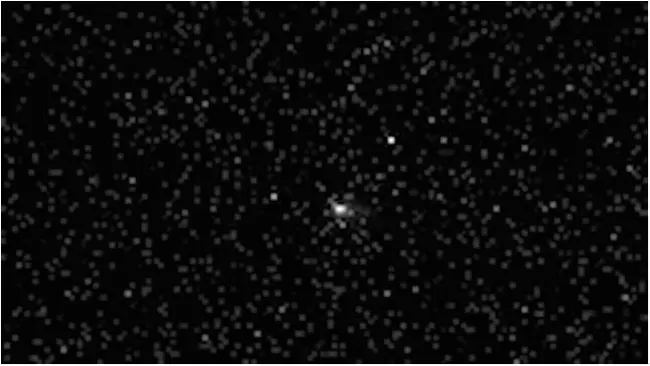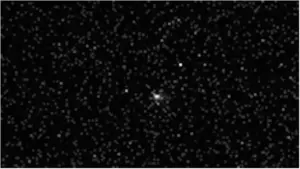China Uses Mars Orbiter To Snap Interstellar Comet 3i/atlas
China has matched the European Space Agency’s feat of taking a snapshot of interstellar comet 3I/ATLAS from a Mars orbiter.
Astronomers spotted 3I/ATLAS in July and the Minor Planet Center noted its “highly eccentric, hyperbolic orbit” that suggested it came from outside our solar system. Later analysis confirmed that theory, making 3I/Atlas just the third such object humanity has ever observed, after the 2017 discovery of 1I/Oumuamua and 2020’s 2I/Borisov.
Interest in such objects is naturally high so NASA used the Hubble Space Telescope to check it out in July.
In early October the European Space Agency (ESA) pointed its ExoMars Trace Gas Orbiter and Mars Express craft at the comet, because it passed just 30 million km from the Red Planet. The orbiters were therefore closer to the comet than other observatories.
China’s National Space Agency (CNSA) today announced its Tianwen-1 orbiter also snapped 3I/Atlas in early October and posted a fuzzy pic of the object.
The quality of that image is excusable: The CNSA and ESA both explained that they designed their Mars orbiters to observe the Red Planet, not small, dim, distant, and fast-moving targets like 3I/Atlas.
The CNSA’s post outlines the difficulties associated with snapping 3I/Atlas by pointing out that it moves at approximately 58 kilometers per second, making its relative velocity compared to Tianwen-1 86 kilometers per second. The interstellar object is also small – probably just 5.6 kilometers in diameter – and dim.
A pre-press paper [PDF] published in late October found the comet “appears distinctly bluer than the Sun,” after initial observations suggested its dust plume might be somewhat red. The paper also notes 3I/Atlas “rapidly brightened on its final approach toward perihelion,” as you’d expect given approaching the Sun causes some of the stuff comets are made of to boil away and/or shake loose to produce a visible “tail”.
The good news or the bad news?
Today’s announcement showed off China’s prowess in space, after the nation’s Manned Space Agency yesterday had the less pleasant duty of announcing the postponement of a return flight from its space station after detecting damage on its Shenzhou-20 spacecraft.
The agency yesterday revealed “The Shenzhou-20 manned spacecraft is suspected of being struck by a small piece of space debris, and impact analysis and risk assessment are underway.” “To ensure the safety and health of the astronauts and the complete success of the mission, it has been decided that the Shenzhou-20 return mission, originally scheduled for November 5th, will be postponed,” the agency advised.
There’s been no word since on damage to the craft or when it might return.
Shenzhou-20 docked at China’s space station in late April, and its successor Shenzhou-21 arrived on October 31st. China designed its space station to host three Taikonauts, other than during the brief periods when crews overlap.
It’s unclear how long the space station can host six visitors, but earlier this week all six Taikonauts celebrated the installation of a new oven by enjoying a barbecue dinner. For what it’s worth, Japan’s space agency last week sent fresh fruit into orbit. ®
Support Our Work
A considerable amount of time and effort goes into maintaining this website, creating backend automation and creating new features and content for you to make actionable intelligence decisions. Everyone that supports the site helps enable new functionality.
If you like the site, please support us on Patreon or Buy Me A Coffee using the buttons below.



![[DRAGONFORCE] - Ransomware Victim: GB Mail 2 image](https://www.redpacketsecurity.com/wp-content/uploads/2024/09/image-300x300.png)

